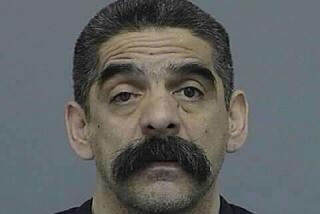Ambusher Describes Death of American : Contra Unit’s Chief Says Linder Was Not Specifically Targeted
- Share via
ON THE HONDURAN-NICARAGUAN BORDER — The leader of a contra attack in which American engineer Benjamin E. Linder was killed said that Linder was not specifically targeted in the ambush and that the attackers did not learn an American was among the casualties until the following day.
The 22-year-old unit commander, who uses the pseudonym Mapachin, also insisted that before opening fire, his men shouted to Linder’s group to surrender.
Linder, 27, from Portland, Ore., died April 28 while working on a Sandinista government hydroelectric project in the northern province of Jinotega. He was the first American volunteer killed in the war.
Mapachin’s account of the attack contradicted charges by Linder’s father and others that the American was killed by a shot at close range after being wounded. It also varied on several points from the version two survivors gave reporters shortly after the attack.
Mapachin, who said he had been fighting with the contras since 1981, spoke to The Times during the weekend at a rebel base camp on the condition that its location not be disclosed. He was accompanied by nine of the 11 men who he said were with him during the attack.
U.S. Embassy officials are expected to interview the unit in the next couple of days.
Mapachin said that a civilian, who lives in the area of San Jose de Bocay, informed the contras on April 27 that a group of Sandinistas would be arriving to work on a dam the next day and that the civilian agreed to lead the rebels to the site. He said the informant told the rebels that a Cuban and another “foreigner” would be in the work group.
The contra headquarters in Tegucigalpa, Honduras, released a statement on the incident Monday, saying the ambushers were aware that a foreigner, of unspecified nationality, was with the working party in Jinotega and that they intended to capture him. Mapachin made no mention of the latter point during the interview.
Mapachin said his superior, known as Rasaga, authorized his 12-man unit to set up an ambush. He said they did so at 5 a.m. on April 28 and that Linder’s group arrived on foot at about 8:30 a.m.
According to Mapachin, there were 10 people in Linder’s group, five of whom were killed in the attack.
Survivors’ Version
But two survivors interviewed within days of the attack said the group consisted of four militiamen and Linder. They and the Sandinista government say there were three casualties--Linder and two of the militiamen.
“There were 10 of them, all wearing olive green (uniforms) and all armed,” Mapachin said.
“We told them to surrender before we fired,” he said.
Asked repeatedly why he would warn an enemy he was about to attack--an unusual tactic in a guerrilla ambush--Mapachin said, “We often do that because we have gotten Sandinistas alive and gotten them to join our ranks.”
Sources close to the contras said they have not heard of such a practice among the rebels.
The surviving militiamen have said no one in the work group had time to fire on the rebels, but Mapachin said that after his men shouted the warning, the Sandinistas took up positions and began firing and tossing hand grenades.
A nurse who attended Linder’s body has said the engineer had a gunpowder burn on his temple, indicating that he was shot at close range. Linder’s father, who is a doctor, said last month that an autopsy showed that his son had been killed at close range.
Mapachin said, however, that Linder was shot from about 20 yards.
“We had no knowledge that he was an American,” Mapachin said. “The people told us the next day. They said an American comrade had died.”
Mapachin said that Linder’s AK-47 assault rifle was one of two recovered after the attack and that it had fired one clip of ammunition. The contra unit also recovered Linder’s personal papers immediately after the attack, he said. He did not explain why, but American advisers reportedly have been telling the contras to gather identification from any victim who appeared to be a foreigner in the hopes of proving that Cubans are fighting with the Sandinistas.
Mapachin and the others in his unit described themselves as illiterates and, therefore, unable to read the documents they seized. They are all natives of the farming area of northern Nicaragua, and a few of them said they had one year of schooling. The others, including Mapachin, said they had never been to school.
Mapachin said his unit had to leave the site of the attack quickly because Sandinista troops were in the area.
More to Read
Sign up for Essential California
The most important California stories and recommendations in your inbox every morning.
You may occasionally receive promotional content from the Los Angeles Times.













